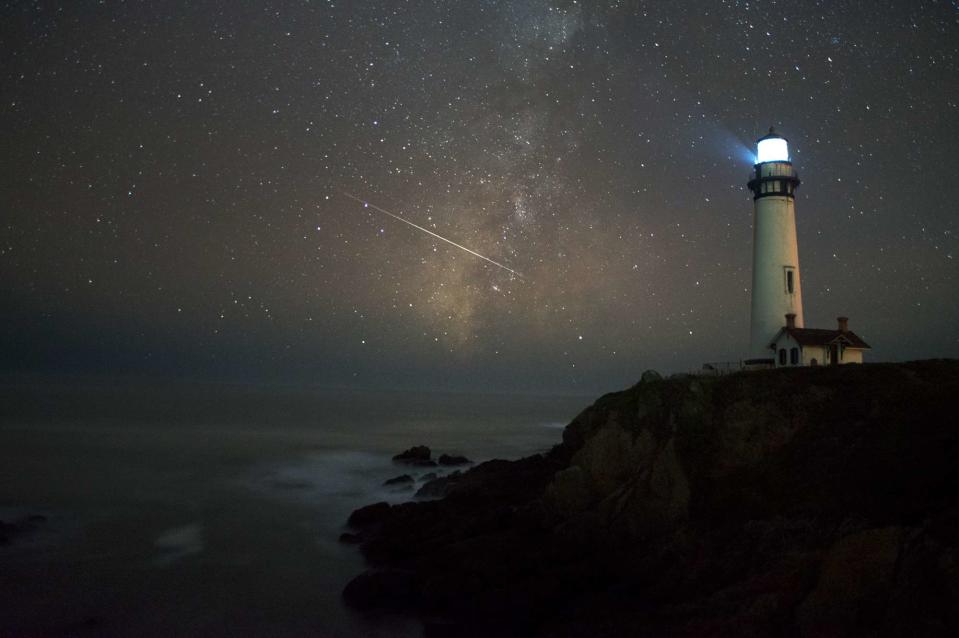See Shooting Stars Dazzle the Sky When The Orionid Meteor Shower Peaks This Weekend
Take a look up at the night sky to catch the Orionids.

Mountain Light Photography Inc/Getty Images
If the skies are clear near you tonight, step outside and take a look up at the stars — there's a good chance you'll see a meteor.
The Orionid meteor shower peaks sometime between Friday night, Oct. 20, and Sunday, Oct. 22. The American Meteor Society (AMS) predicts the peak will occur tonight into the early morning hours of Saturday, while the skywatching site EarthSky predicts the peak will occur Saturday night into the early morning hours on Sunday.
Regardless of the exact evening, there's good news for stargazers, the moon is only 37% full on Friday which means the skies should be reasonably dark to see most of the meteors throughout the weekend.
Ready to catch the show? Here's what you need to know about the Orionids.
What Is the Orionid Meteor Shower?
Meteor showers occur when the Earth travels through the path of a celestial object like an asteroid or a comet. Debris from that object — say, bits of rock or dust — burns up in our atmosphere, and shooting stars are born. In the case of the Orionid meteor shower, the parent object that ultimately produces these meteors is Halley's Comet, a rather famous comet that was last visible on Earth in 1986, according to NASA, that will return in 2061.
When Is the Orionid Meteor Shower?
The Orionids began on Sept. 26 and will run through Nov. 22, according to AMS. The peak occurs sometime between tonight, Oct. 20, and the early morning hours of Sunday, Oct. 22. The best time to view this meteor shower is after midnight, per EarthSky, so be sure to set your alarms if you're not a night owl.
How Can I See the Orionid Meteor Shower?
Meteor showers are very easy to see if you have dark skies. So, check your forecast for clouds, then head out of town as far from light pollution as possible. Once you're somewhere dark, let your eyes adjust for around 20 minutes, then look to the skies. The shooting stars will appear to emanate from the constellation Orion (for which the shower is named), but they'll be visible across the entire sky. You can expect to see approximately 20 to 30 meteors per hour, according to Space.com.
When Is the Next Meteor Shower?
Cloudy skies in your location? Don't worry, the next meteor shower is not too far away. The Southern Taurids should peak on the night of Nov. 5, while the Northern Taurids should peak on the night of Nov. 11, per AMS. Viewing conditions will likely be better for the latter shower, as the moon will be just 2% full compared to 44% full for the earlier shower.
For more Travel & Leisure news, make sure to sign up for our newsletter!
Read the original article on Travel & Leisure.

